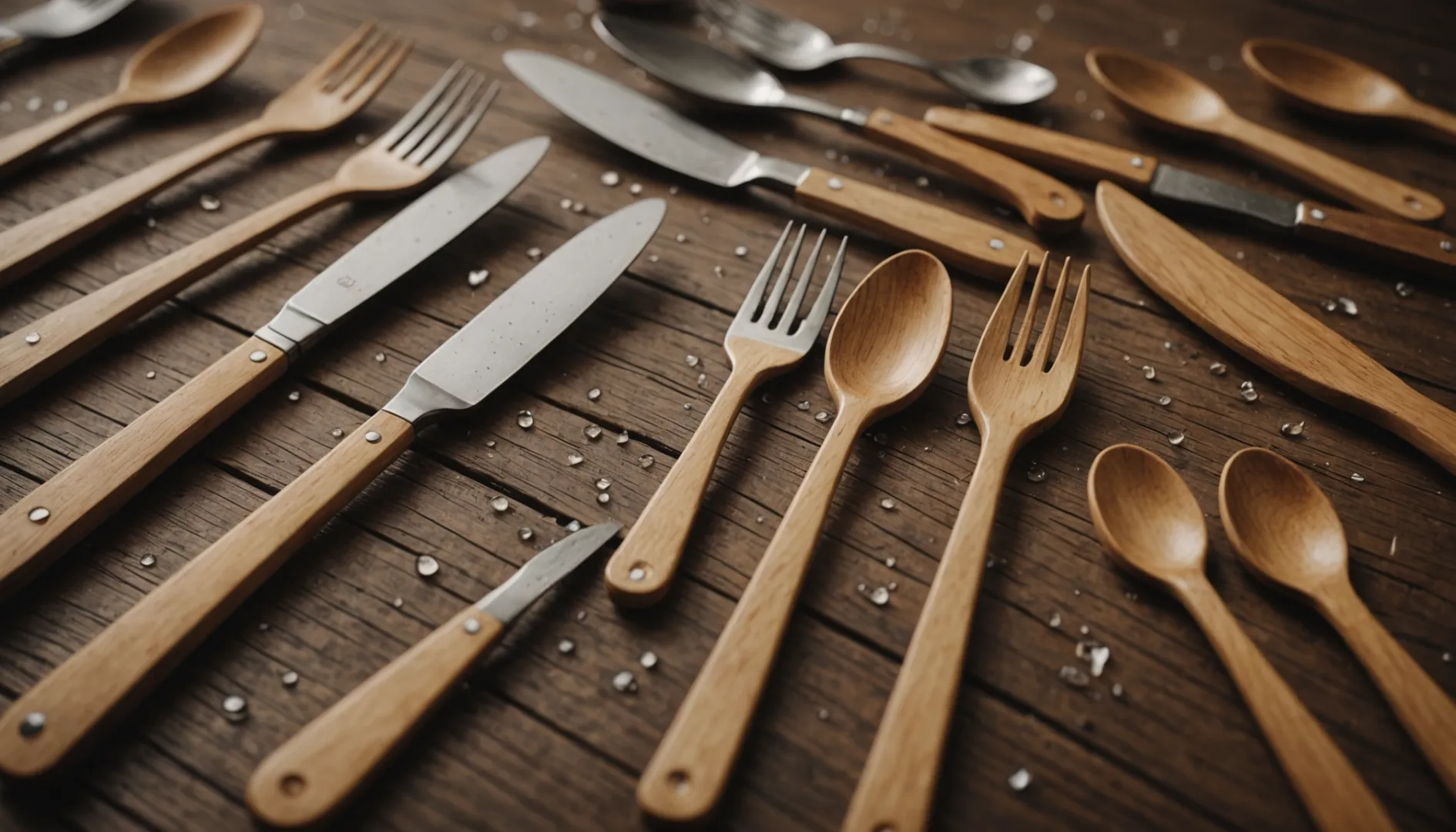
Have you ever considered how the type of wood used in disposable cutlery affects its performance?
Wood density and absorbency significantly affect the durability and lifespan of disposable wooden cutlery. Higher density woods tend to be more durable but may require additional maintenance to prevent absorbency-related issues, such as warping and bacterial growth.
While understanding these properties provides a basic insight into the durability of wooden cutlery, there are numerous factors influencing their performance and environmental benefits. Read on to discover how these aspects interplay to offer a sustainable dining solution.
Higher wood density increases cutlery durability.True
Denser woods, like maple and oak, resist wear better, enhancing durability.
What Types of Wood Are Best for Durable Wooden Cutlery?
When selecting wood for durable wooden cutlery, the type of wood can make a significant difference. Certain types of wood are renowned for their strength, resilience, and longevity, making them ideal for cutlery.
For durable wooden cutlery, hardwoods like maple and oak are preferred due to their density and resistance to wear. These woods offer a refined finish and improved longevity, balancing aesthetic appeal with functional performance.
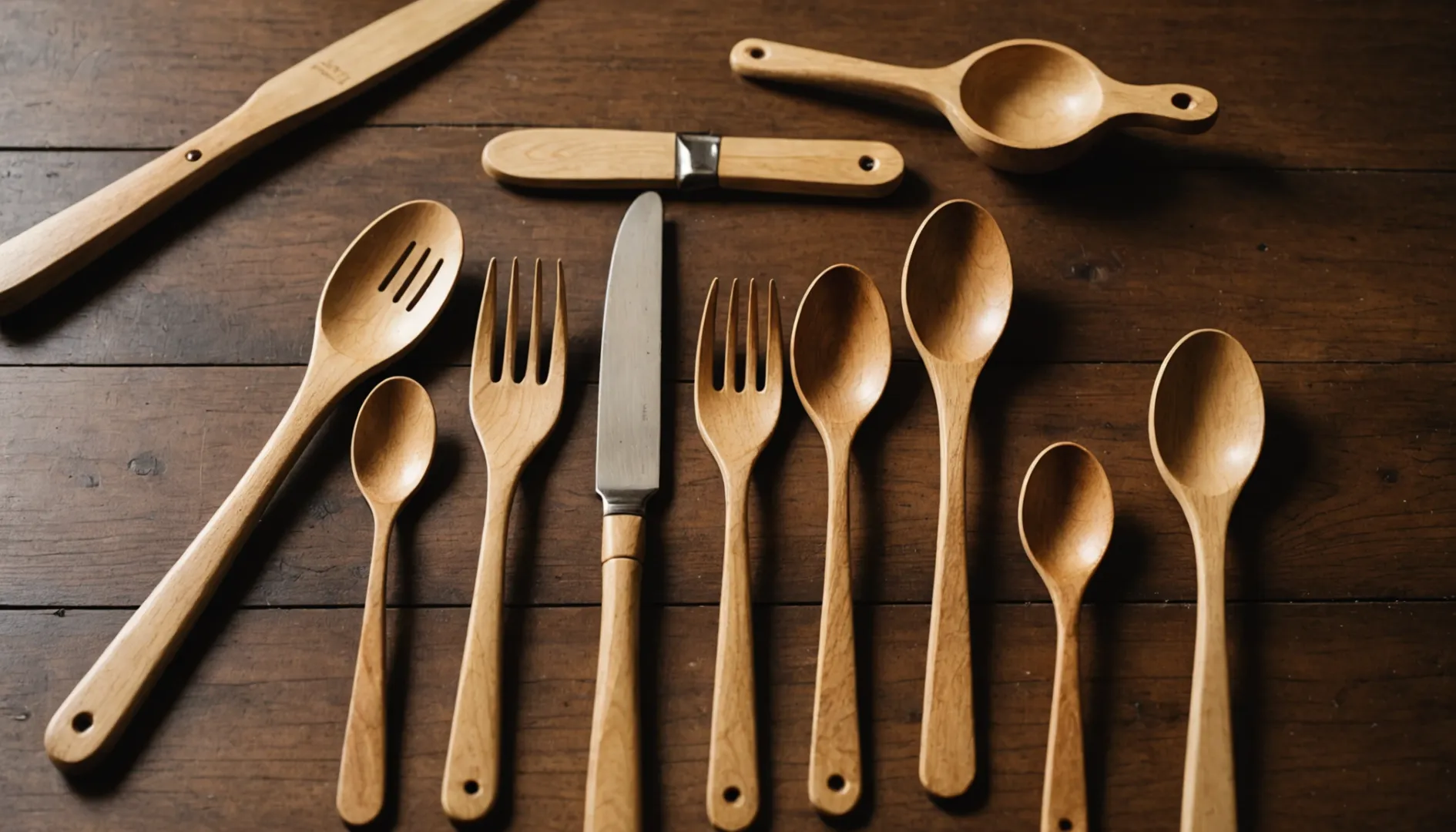
Understanding Wood Types for Cutlery
Choosing the right wood for cutlery is crucial for ensuring both durability and aesthetics. While all woods have unique properties, certain types stand out for this application.
-
Maple
Maple is a hardwood known for its fine grain and robust structure. This makes it a popular choice for wooden cutlery1 as it withstands daily wear and tear while offering a smooth finish.
-
Oak
Oak is another excellent option, offering high density and durability. Its natural tannins also provide some resistance to bacteria, enhancing the hygienic properties of cutlery made from this wood.
-
Linden
Although softer than maple or oak, linden is lightweight and cost-effective. It may not provide the same level of durability but is ideal for less frequent use or single-use applications.
Factors Influencing Wood Choice
-
Density: Hardwoods like maple and oak have a higher density, contributing to their durability. However, they may require regular maintenance to prevent issues like cracking or splitting.
-
Aesthetic Appeal: The grain and color of the wood affect the visual attractiveness of the cutlery. For high-end markets, the refined look of hardwoods can be more appealing.
-
Environmental Impact: Sourcing wood from sustainably managed forests is vital. Woods with eco-certifications ensure that the cutlery is not only durable but also environmentally friendly.
| Wood Type | Density | Durability | Cost |
|---|---|---|---|
| Maple | High | High | Medium |
| Oak | High | High | High |
| Linden | Medium | Medium | Low |
Understanding these factors helps manufacturers and consumers select the best wood types for durable cutlery, balancing environmental responsibility with product longevity.
Maple wood is more durable than linden for cutlery.True
Maple's high density and fine grain make it robust for daily use.
Linden wood is the most expensive option for cutlery.False
Linden is cost-effective, making it cheaper than maple or oak.
How Does Absorbency Influence the Hygiene of Wooden Utensils?
Wooden utensils are cherished for their natural beauty and sustainability, but their absorbent nature raises hygiene concerns. How does this property impact their safety?
Absorbency in wooden utensils can lead to moisture retention, promoting bacterial growth if not properly managed. Regular maintenance, including oil treatments and thorough drying, is crucial to maintaining hygiene.
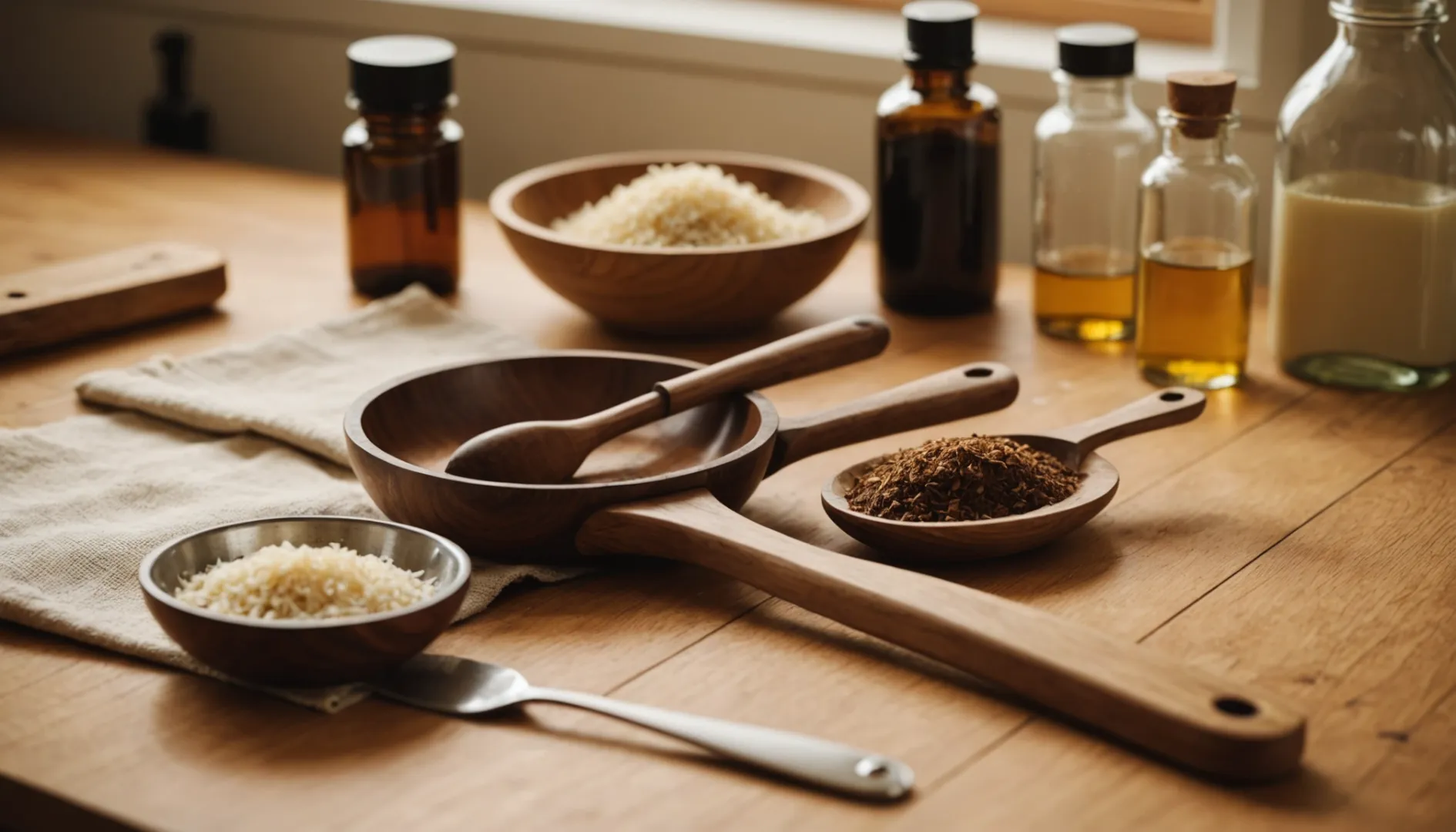
The Science of Absorbency in Wood
Wood is a porous material, meaning it can absorb liquids and other substances, including bacteria. This absorption is both a benefit and a challenge. The porosity of wood allows it to trap and retain flavors, adding an extra depth to cooking, but it can also hold onto moisture, which may lead to bacterial growth if not properly managed.
The degree of absorbency depends on the type of wood used. Hardwoods like maple are less absorbent compared to softer woods like pine. This is due to the density of the wood fibers; denser fibers leave less room for moisture to seep in.
Impact on Hygiene
When wood absorbs moisture, it creates an environment that may be conducive to bacteria. However, studies have shown that wood possesses natural antibacterial properties that can inhibit bacterial growth. These properties vary among different types of wood and are often enhanced by the application of natural oils or waxes that form a protective barrier against moisture.
Maintenance Practices for Hygiene
Proper maintenance can significantly reduce hygiene risks associated with wooden utensils. Here are some practices to consider:
- Regular Oiling: Applying food-safe oils like mineral oil or beeswax forms a protective layer, reducing absorbency and preventing cracks.
- Thorough Drying: After washing, wooden utensils should be dried immediately and thoroughly to prevent water from settling into the wood.
- Avoid Soaking: Prolonged exposure to water should be avoided. Instead, wash utensils quickly and dry them promptly.
Natural Coatings as a Protective Measure
Natural coatings play a crucial role in extending the lifespan and hygiene of wooden utensils. Coatings like beeswax and plant oils not only enhance the utensil's appearance but also create a protective layer against moisture absorption and bacterial growth. Over time, these coatings may wear off, necessitating reapplication to maintain effectiveness.
Some manufacturers are exploring innovative coatings that further enhance these protective properties. For example, certain natural oils have been modified to increase their antimicrobial effectiveness.
Consumer Role in Maintaining Hygiene
Consumers play a vital role in maintaining the hygiene of their wooden utensils. Educating consumers on proper cleaning techniques can make a significant difference. Simple actions like avoiding high heat and harsh detergents can prevent damage and extend the life of the utensils.
Regular reconditioning of wooden cutlery with oil treatments helps maintain both its structural integrity and hygiene, ensuring these eco-friendly tools remain safe for everyday use. For those interested in learning more about the types of natural oils suitable for maintaining wooden utensils, check out this guide on choosing the right oil2.
Wooden utensils are naturally antibacterial.True
Wood has natural antibacterial properties that inhibit bacterial growth.
Maple wood is more absorbent than pine.False
Maple is less absorbent due to its denser wood fibers compared to pine.
What Role Do Natural Coatings Play in Extending Cutlery Lifespan?
Natural coatings like beeswax and plant oils enhance the durability and hygiene of wooden cutlery, offering protection against moisture and bacteria.
Natural coatings protect wooden cutlery by creating a barrier against moisture and bacteria, enhancing both durability and hygiene. Regular reapplication maintains these benefits, preventing cracking and extending lifespan.
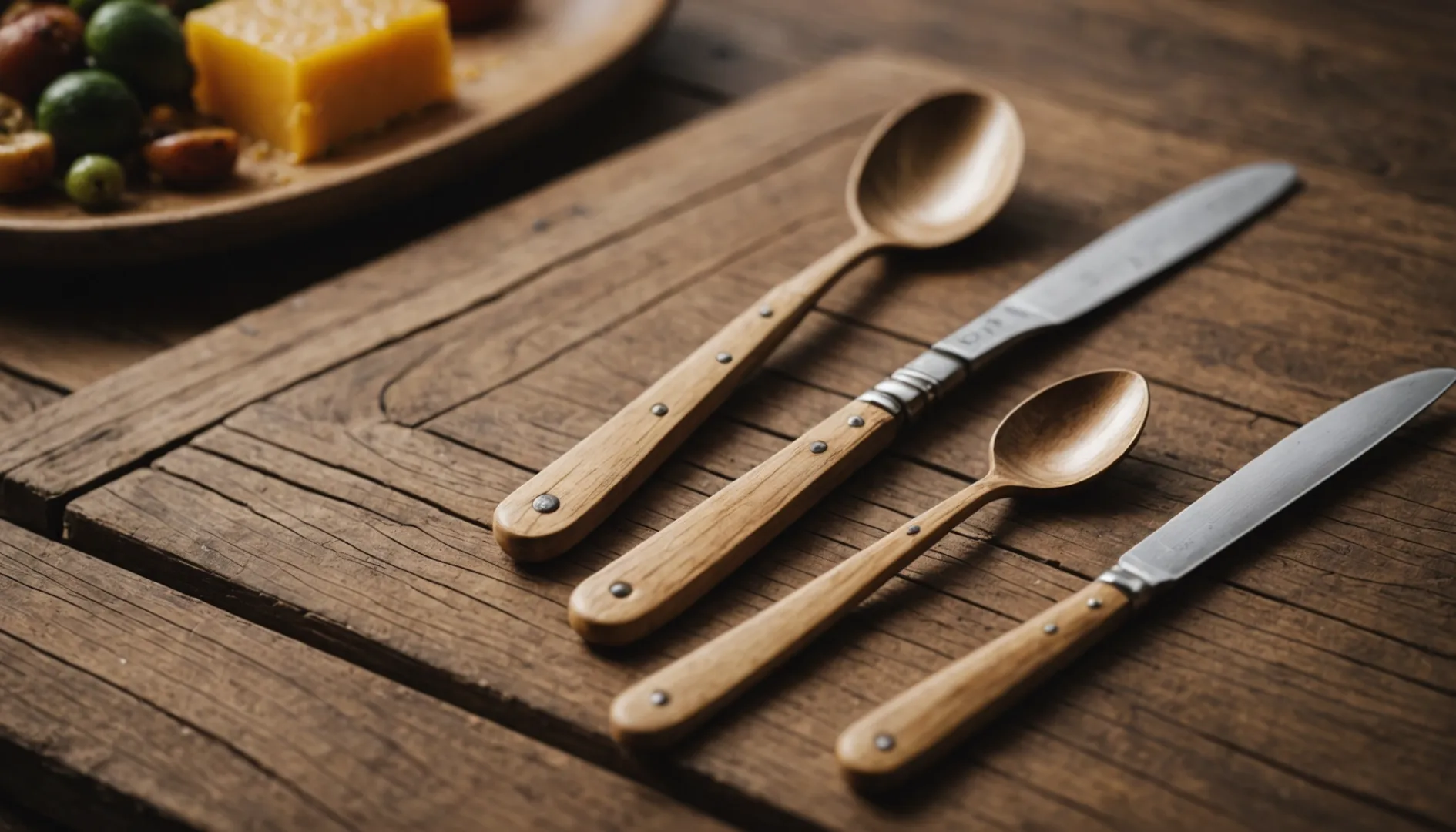
Enhancing Durability Through Natural Coatings
Natural coatings like beeswax and plant oils serve as protective barriers for wooden cutlery, significantly enhancing their durability. By sealing the wood's porous surface, these coatings reduce moisture absorption, which is crucial for preventing warping and cracking. This makes the cutlery more resilient to daily wear and tear, particularly in humid environments.
For instance, a light coat of beeswax can create a water-resistant finish that not only preserves the wood but also brings out its natural grain, adding to the utensil's aesthetic appeal. Similarly, plant oils penetrate deeper into the wood fibers, providing long-lasting protection while maintaining flexibility.
Impact on Hygiene
In terms of hygiene, natural coatings play a pivotal role by minimizing bacterial growth. Since wood is naturally porous, it can harbor bacteria if left untreated. A coating of food-safe oil can fill these pores, reducing the surface area available for bacteria to thrive.
This protective layer also makes cleaning more effective; instead of soaking into the wood, food particles remain on the surface where they can be easily washed away. This is particularly beneficial for those using wooden cutlery in professional settings, where hygiene standards are paramount.
Maintenance and Reapplication
While natural coatings provide significant benefits, they do wear off over time, especially with frequent washing. Regular maintenance is essential to sustain their protective qualities. Reapplying oil or wax every few months can keep the cutlery in optimal condition.
To recondition wooden utensils:
- Clean them thoroughly with mild soap and water.
- Dry completely to prevent any moisture from getting trapped under the new coating.
- Apply a thin layer of your chosen coating—beeswax or mineral oil are popular choices.
- Allow it to soak overnight before wiping off any excess.
This process not only revives the utensil's appearance but also reinforces its resistance to moisture and bacteria.
Sustainable Choices for Eco-Conscious Consumers
Consumers increasingly demand sustainable products, and natural coatings align perfectly with this trend. They are biodegradable and free from harmful chemicals, unlike synthetic alternatives. This eco-friendly approach not only extends the lifespan of wooden cutlery but also enhances its appeal to environmentally conscious buyers.
Manufacturers should ensure their coatings are sourced sustainably. Exploring natural coatings for wooden utensils3 can provide insights into options that align with eco-friendly practices. Opting for certified organic materials further boosts the product's marketability among consumers prioritizing green choices.
Beeswax coating prevents wooden cutlery from warping.True
Beeswax creates a water-resistant finish, reducing moisture absorption.
Natural coatings are ineffective against bacterial growth.False
They minimize bacterial growth by filling wood pores, reducing bacteria.
How Can Consumers Maintain Their Wooden Cutlery for Longevity?
Maintaining wooden cutlery ensures it remains hygienic and functional for years. With proper care, these eco-friendly utensils can be both durable and sustainable.
To maintain wooden cutlery, regularly oil them to prevent drying and cracking, avoid soaking, wash by hand with mild soap, and store in a dry place.
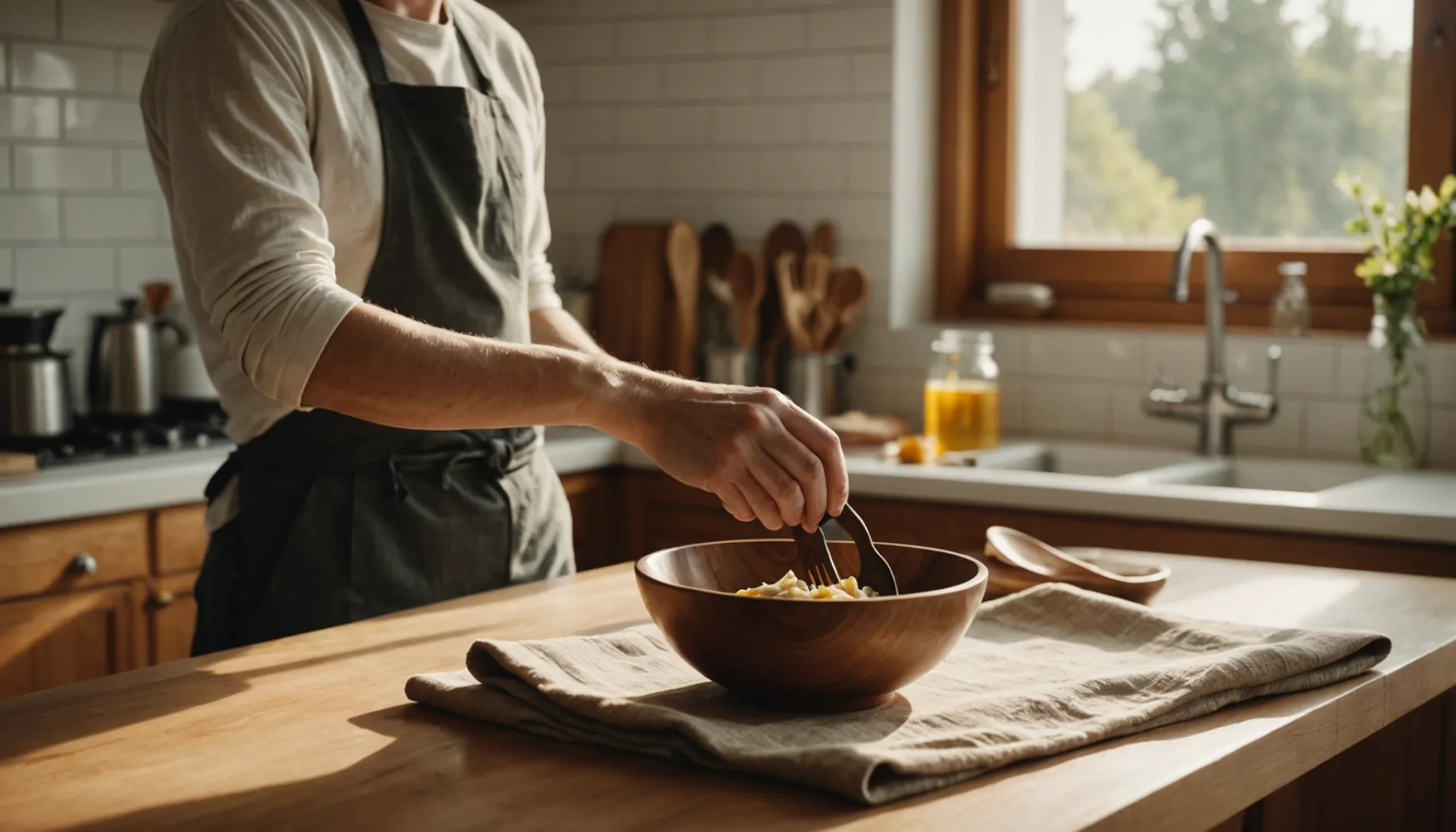
Regular Oiling and Reconditioning
One of the most effective ways to extend the life of your wooden cutlery is through regular oiling. Over time, the natural finish on wooden utensils wears off, making them susceptible to drying and cracking. Applying food-safe oils like mineral oil or beeswax can help restore their protective coating. This not only prevents moisture absorption but also enhances the wood's natural beauty.
To oil your cutlery, apply a small amount of oil on a clean cloth and rub it into the wood. Let it sit for a few hours or overnight before wiping off any excess. This simple process can be done monthly or whenever the wood starts to feel dry. If you're interested in learning more about this technique, consider searching for oil treatment for wooden utensils4 to discover the best oils and methods.
Proper Cleaning Techniques
Wooden cutlery should be washed by hand with mild soap and warm water. Unlike metal or plastic utensils, they should not be soaked or washed in a dishwasher, as prolonged exposure to water can lead to swelling, cracking, or warping. After washing, dry them immediately with a clean towel.
Avoid using harsh detergents or scouring pads that might scratch the surface. A gentle approach ensures that the wood remains smooth and free from splinters. For occasional deep cleaning, you can use a mixture of vinegar and water to disinfect the utensils naturally.
Storing Wooden Utensils
Proper storage is crucial for maintaining wooden cutlery's longevity. Always store them in a dry place away from direct sunlight or heat sources, as excessive heat can dry out the wood. Consider using a utensil drawer or a holder that allows air circulation.
Furthermore, ensure that your utensils are completely dry before storing them to prevent mold growth. For additional tips on storage solutions, explore wooden utensil storage ideas5 for creative ways to keep them organized and safe.
Understanding the Benefits of Natural Coatings
Natural coatings like beeswax or plant oils provide an added layer of protection against moisture and bacterial growth. These coatings make cleaning easier and enhance the utensil's longevity by sealing the wood pores.
Over time, these coatings may wear off, so reapplication is necessary. The frequency will depend on how often you use and wash your utensils. To explore various natural coatings and their benefits, consider researching natural coatings for wooden cutlery6.
By following these maintenance practices, consumers can enjoy their wooden cutlery for many years while also supporting sustainable living.
Wooden cutlery should be oiled monthly.True
Regular oiling prevents drying and cracking, enhancing longevity.
Wooden cutlery can be washed in a dishwasher.False
Dishwashers can cause swelling or warping due to prolonged water exposure.
Conclusion
Understanding wood density and absorbency is crucial for maximizing the lifespan of your wooden cutlery. Choose wisely and care for them well to embrace sustainability.
-
Explore why maple is preferred for its durability and smooth finish.: Using Maple Wood Cutlery offers many advantages when compared to bamboo. It is more durable, has a longer lifespan, is more resistant to moisture and heat. ↩
-
Explore different oils that protect wooden utensils effectively.: Mineral oil has long been the go-to for oiling wood, but some people don't want to buy petroleum products, as they could be possible carcinogens. ↩
-
Learn about sustainable options that enhance durability and appeal.: Widely used in this application for centuries, linseed and walnut are natural oils that can create a very durable wood finish, almost like a ... ↩
-
Discover recommended oils and methods for treating wooden utensils.: Mineral oil has long been the go-to for oiling wood, but some people don't want to buy petroleum products, as they could be possible carcinogens. ↩
-
Explore creative storage solutions for organizing and protecting wooden utensils.: Dec 4, 2020 - Explore paveetsandhu Sandhu's board "Wooden utensil holder" on Pinterest. See more ideas about kitchen design, kitchen storage, diy kitchen. ↩
-
Learn about various natural coatings that protect and enhance wooden cutlery.: I use linseed oil, a very very light coat and leave in to cure in a warm well area with sunlight. Technically you don't actually need to oil a ... ↩

